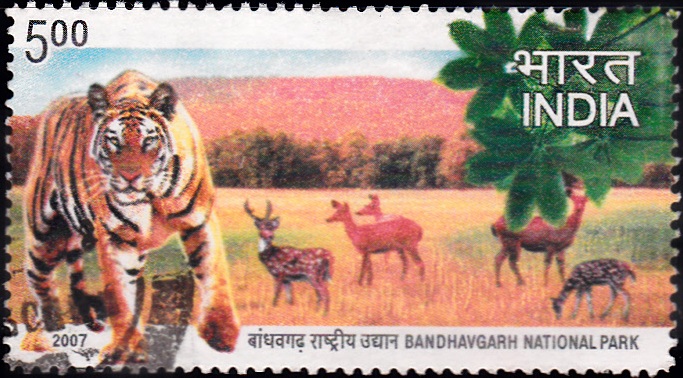
National Parks of India
Complete Set of 5 nos of commemorative postage stamps on the Indian National Parks : Bandipur, Mudumalai, Bandhavgarh, Periyar and Kaziranga :
Issued by India
Issued on May 31, 2007
Issued for : In bringing out a set of five commemorative postage stamps on National Parks of India, India Post celebrates the unique beauty of each. While applauding the conservation efforts so far made, there is obviously a need to carry this movement forward with greater resolve. This set of stamps will create greater awareness of the heritage we need to preserve.
India Post is proud to showcase the natural heritage of India by bringing out a set of five stamps featuring famous National Parks around the country.
Credits :
Stamp & FDC : Suresh Kumar
Cancellation : Alka Sharma
Type : Stamps, Postal Used
Colour : Multicolor
Denomination : 500 Paise each
Stamps Printed : 0.6 Million each
Printing Process : Photogravure
Printer : India Security Press, Nasik
About :
- India’s rich biodiversity has fascinated people down the ages. India can boast of more than 500 species of mammals, 2,000 species of birds, 500 species of reptiles, and 30,000 species of insects. India also have an ingrained tradition of conservation stretching back in history.
- However, the pressures of an increasing population have led to widespread changes in land ways. This has, in effect, led to a gradual encroachment and decimation of forest cover and water bodies, resulting in the destruction of the natural habitat which has sustained wildlife down the centuries.
- While shooting for sport ‘Shikar’, posed the greatest threat to wildlife in the late 19th and early 20th centuries, it is the destruction of habitat and illegal poaching for commerce that present the major problems to conservation today.
- Realizing the danger, sanctuaries for protecting the wildlife, along with their natural habitat, were set up in India from the first half of the 20th century itself and today there are more than 450 Wildlife Sanctuaries and 85 National Parks, around the country.
- A comprehensive legislation called the ‘Wildlife Protection Act’ was enacted in 1972 for providing legal protection to wildlife, and to endangered species of fauna in particular, as protecting our natural heritage and preventing the extinction of increasingly rare and endangered species of animals like the one-horned Indian Rhinoceros, the Indian Elephant, the Tiger, and the Musk Deer among other, assumed national importance.
- Under this Act, the State Governments are empowered to declare any area as a Sanctuary or a National Park for the purpose of protecting and conserving wildlife and the environment. All National Parks and Sanctuaries are however not alike. While some have been created to protect certain specific rare and endangered species, some are famous for the richness and variety of their flora as well as fauna.
- Bandipur National Park :
- The Bandipur National Park is a beautiful forest reserve located in Karnataka. It lies in the shadow of the Western Ghats and spreads across an area of about 875 sq. km. at a height of 780-1455 m above sea level. A moderate climate and diverse geographical features support a remarkable variety of flora and fauna. Declared a National Park under the Wildlife Protection Act in 1974, this National Park is best known for its elephant herds and Sandalwood trees. A mix of deciduous and evergreen forests and scrubland supported by the waters of the Moyar River, this forest reserve is home to Indian Elephant, Tiger, Gaur, Sambar, Chital, Four Horned Antelope, Wild Pig, Black-Naped Hare and the Indian Porcupine. The Park is also rich in avian population with an abundance of birds like the Peafowl, and game birds like the Grey Jungle Fowl, Red Spur Fowl, etc.
- Mudumalai National Park :
- The Mudumalai National Park lies in the state of Tamil Nadu and is contiguous to the Bandipur National Park, separated by the river Moyar that flows between the two. It is located on a 1000 Mtr. high plateau at the base of the Nilgiri hills with a core area of 104 sq. km. and was declared as a National Park in the year 1990. Just 321 sq. km. in area, the hilly terrain provides diverse habitats sustaining a great variety of wildlife including the Tiger, Leopard, Bear, Elephant, Bison, Sambar, Spotted Deer, Four-Horned Antelope, Black Buck, Hyena, Wild Dog, Porcupine, Jackal, Python etc. Rich in bird life, most families of birds found in the Indian sub-continent including some uncommon and rare species like the Grey Jungle Fowl, Red Spur Fowl, Grey Partridge, Malabar Whistling Thrush, Magpie Robin, Spotted Babbler, Pigeons, Brown Dove, Malabar Grey Hornbill, Harriers, Falcons and King Vulture, etc. may be sighted in the Park area, comprising a mixture of rain forest, evergreen, and deciduous forest and scrubland, with lofty as well as stunted trees, grass covered hills and marshy swamps. Bamboos, natural teak, sandalwood trees, slender Indian laburnum, flame of the forest are some of the better known flora which abound.
- Bandhavgarh National Park :
- The Bandhavgarh National Park in Madhya Pradesh is primarily known for its tiger population. The former hunting reserve of the royal family of Rewa, Bandhavgarh was declared as a National Park in 1968. Covering an area of 542.40 sq. km. the forest area comprising of teak forest, grasslands and scrubland has about 22 mammal species and about 250 bird species. This is the place where the famous white tigers were discovered. Apart from the tiger, the other animals inhabiting this hilly Parkland include the Nilgai, Chausingha, Chital, Chinkara, Black Buck and Wild Boar, as well as two primate species, the Rhesus Macaque and the Hanuman Langur.
- Periyar National Park :
- The Periyar National Park and Tiger Reserve was established in the verdant stretches of Kerala in 1895 and declared as a Tiger Reserve in 1978. The Periyar Wildlife Sanctuary covers an area of 777 sq. km. of which 360 sq. km. is under dense and evergreen forest cover. Deriving its name from the vast and stunningly beautiful Periyar Lake, the habitat diversity is reflected in the variety of fauna. There are 35 species of mammals in the Park including its major attraction, the Indian Elephant, the endangered Lion-tailed Macaque which is confined to the evergreens in the interior as well as the Nilgiri Langur, Bonnet Macaque, Malabar Giant Squirrel, Flying Squirrel, Wild Boar, and Barking Deer. Periyar is also the only habitat of the Nilgiri Tahr, which is not seen easily. This National Park is also rich in birds with 285 species including the Hornbill, Stork, Woodpecker, Kingfisher, Raptor, Cormorant and the Darter.
- Kaziranga National Park :
- Kaziranga National Park is one of the last refuges of the endangered one horned Indian Rhinoceros. Located in Assam on the southern bank of the Brahmaputra River, Kaziranga was declared a reserve forest in 1908, primarily to protect this indigenous endangered species and a ban imposed on poaching of the Indian Rhino. Declared as a Wildlife Sanctuary in 1940 the Park was given the status of a National Park in 1974, and has also been declared a UNESCO world heritage site in 1985. Conservation effort in this Park have paid off and the figure of 12 Rhinos in the early 90s has now grown to around 1000 Rhinos. Other animals that inhabit the Park are the Elephant, Tiger, Wild Boar, Jackal, Wild Buffalo, Python, Monitor Lizard, Bison, Leopard, Swamp Deer, Hog Deer, Jungle Cats, Otters, Hoolock Gibbon, etc. Kaziranga is also a bird-watcher’s paradise. Apart from the resident bird species like the Oriental Honey Buzzard, Black-Shouldered Kite, Black Kite, Brahminy Kite, Pallas’s Fishing Eagle, White Tailed Eagle, Grey-Headed Fishing Eagle, Himalayan Griffon, etc. A large number of migratory birds inhabit the Park’s lakes and marshy areas during the winters including the Greylag Geese, Bar-Headed Geese, Ruddy Shelduck, Gadwall, Falcated Duck, Red-Crested Pochard, and Northern Shoveller.
- Text : Based on material provided by Postal Circles, Tourism Departments of the respective States and the Ministry of Environment & Forests.


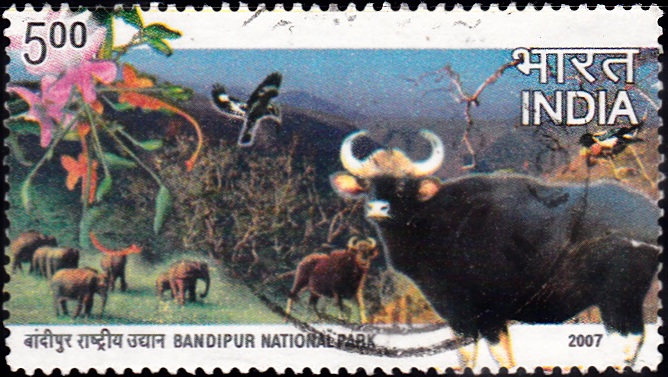

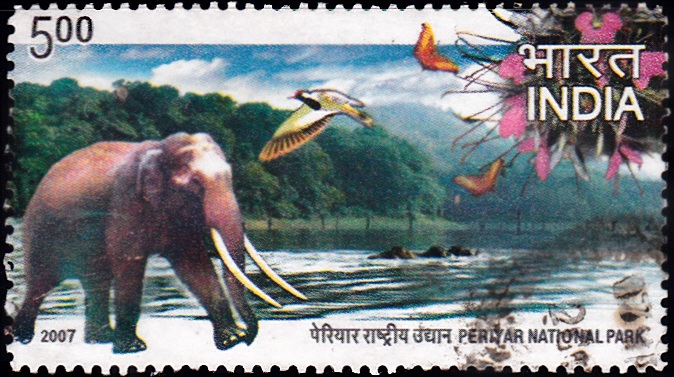

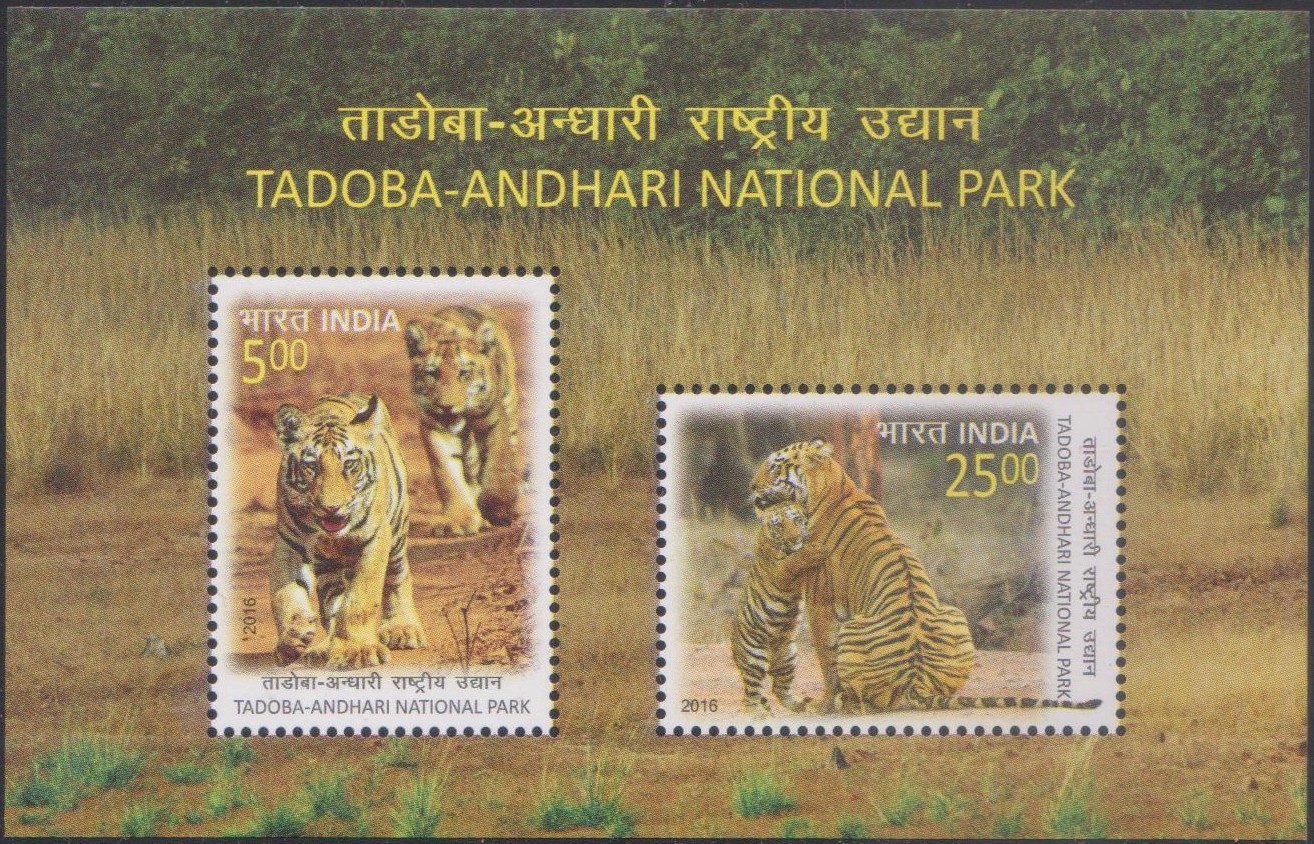
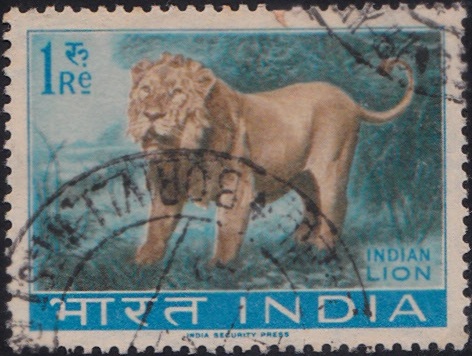

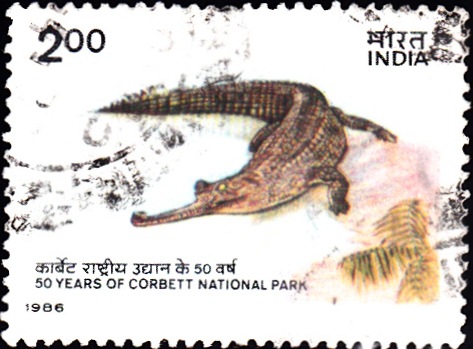


[…] including Bramhagiris Wildlife Sanctuary, Aralam Wildlife Sanctuary, Eravikulam National Park, Periyar Tiger Reserve, Kalakkad–Mundanthurai Tiger Reserve, Neyyar Wildlife Sanctuary, Peppara Wildlife Sanctuary […]
[…] master bull of a herd of these animals in Periyar Sanctuary of Kerala paused for a moment as he was grazing and looked up – the embodiment of vigour and […]
[…] in India. Located about 80 km north east of Palakkad, Kerala, the 8952 sq km forest was declared a National Park on 14th November 1984 and now it forms part of the core of Nilgiris Biosphere […]
[…] Two football tournaments are staged in his name. In Assam, where Talimeren grew up, there are two sporting venues named after him – an indoor stadium in Cotton College, Guwahati, where he studied, and an outdoor venue in Kaliabor, east of the Kaziranga National Park. […]